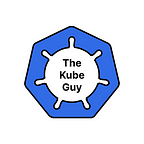What’s inside Kubernetes v1.29 “Mandala”?
Following our previous exploration of the v1.30 release — which saw the notable addition of structured parameters to enable dynamic resource allocation and support for Node memory swap, among a usual slew of other enhancements including updates to CPU Manager, Device Manager, and Topology Manager APIs
— let’s now take a look at the features getting attention in this latest release so that you Kubernetes v1.29 — Mandala
The fullness of the universe, that’s the inspiration behind Kubernetes v1.29, named “Mandala.” It represents the great and huge cooperativeness of the Kubernetes community — developers, users, supporters — into one inclusive The concept of Mandala is made out of an inspiration reminding the reader of joint activities that mold Kubernetes with harmony and how each contribution becomes transformational. A major improvement over the utilization of storage within Kubernetes is in the highlighted feature of the stable key
ReadWriteOncePod Enhancements Access Mode PersistentVolume.
Until now, Kubernetes had three kinds of access modes for PersistentVolumes (PVs) and PersistentVolumeClaims (PVCs), which specify the manner by which pods have access to storage volumes. V1.29 introduces the ReadWriteOncePod AccessMode, which will be a stable feature. A PVC created in this AccessMode can only be consumed by one Pod, enforcing at the controller level that at most one Pod in the entire cluster can read or write volume. This comes as an improvement, especially for applications that need high insistence on data safety guarantees, because it blocks the data’s corruption that would result due to parallel writings.
Volume Expansion CSI Driver:
Another very important improvement from Stable is the support for CSI drivers that will enable node volume expansion. This is a direct volume-growing-on-node capability, which means in this phase, no specific credential or operation will be required. In more specific cases, for example, in encrypted block storage, a passphrase might be needed for that expansion operation to occur. This enhances simplicity in operations that are sure of the secure expansion of the volume.
Beta Features
SidecarContainers.
One of the highlights in Kubernetes v1.29 is the addition of SidecarContainers as one of the beta features. In this way, init containers could be employed literally as sidecars with main containers, starting prior to the termination of the pod. This is important functionality for controlling long-running auxiliary processes that must run concurrent with main containers and are logging agents or monitoring tools. Kubernetes, in fact, permits init containers to run to completion and even be restarted as necessary. It offers better flexibility in controlling the life cycle of pods and controlling the way containers interact with Kubernetes.
KMS v2 Encryption at Rest:
Security KMS v2 of the KMS provides the possibility of the data to be encrypted at rest. With v1.29, Kubernetes introduces KMS v2 encryption as a stable feature, enhancing the security of persisted API data. Using the KMS external key management service in encrypting the data, it offers a second layer of protection, thereby enabling the sensitive aspect of the data to be well guarded.
Gateway API v1.0:
The Gateway API has been promoted to v1.0 release. It is intended as a more expressive and extensible successor to the Ingress API, targeting to overcome some of the architectural limitations imposed by the nearly decade-old design of the Service API. The Gateway API brings a unique way that covers the interests of infrastructure providers, roles of cluster operators, and application developers. It offers advanced traffic management features and, in general, exposes a more flexible, powerful way of service networking in Kubernetes.
This release comprises a mixture of stable, beta, and alpha features that address key areas such as security, storage, networking, and pod management. For more such informative articles do follow The kube guy
In Plain English 🚀
Thank you for being a part of the In Plain English community! Before you go:
- Be sure to clap and follow the writer ️👏️️
- Follow us: X | LinkedIn | YouTube | Discord | Newsletter
- Visit our other platforms: Stackademic | CoFeed | Venture | Cubed
- More content at PlainEnglish.io
